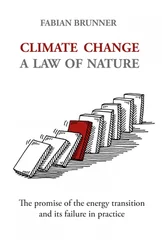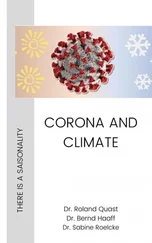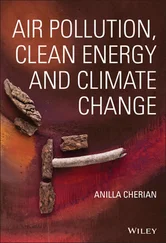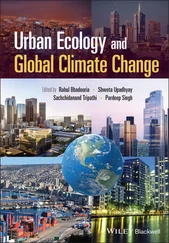Catalina SandovalBanco Central de Costa Rica San José, Costa Rica
Colin ShawFour Twenty Seven Inc. San Francisco, University of California Berkeley, California, USA
Dáithí A. StoneGlobal Climate Adaptation Partnership Oxford, United Kingdom
Yan TanDepartment of Geography, Environment and Population University of Adelaide Adelaide, Australia
Joshua TurnerFour Twenty Seven Inc. San Francisco, California, USA
Jennifer VanosSchool of Sustainability, College of Global Futures Arizona State University Tempe, Arizona, USA
Raffaele VignolaCATIE Environmental Policy Group Turriabla, Costa Rica Wageningen University and Research Wageningen, The Netherlands
Bárbara VigueraCATIE Turrialba, Costa Rica
Michael WehnerLawrence Berkeley National Laboratory Computational Research Division Berkeley, California, USA
David ZilbermanDepartment of Agricultural and Resource Economics University of California, Berkeley Berkeley, California, USA
Climate change has continued unabated since the second assessment report of the Intergovernmental Panel on Climate Change concluded in 1995 that “the balance of evidence suggests a discernible human influence on global climate” (Houghton et al., 1996, p. 4). Since then, confidence in the attribution of the human cause of global warming has increased to the point that by 2018 the Fourth United States National Climate Assessment report found that there is “no convincing evidence that natural variability can account for the amount of global warming observed over the industrial era” and that at best estimate, human changes to the composition of the atmosphere, mainly through the consumption of fossil fuels, accounted for all of that warming (Wuebbles et al., 2017). Because significant climate change is certain to continue into the future, attention to its impacts has become critically important (Field et al., 2014; Jay et al., 2018). As noted in the Fifth Assessment Report of the Intergovernmental Panel on Climate Change:
Global, regional, and local socioeconomic, environmental, and governance trends indicate that vulnerability and exposure of communities or social‐ecological systems to climate hazards related to extreme events are dynamic and thus vary across temporal and spatial scales (high confidence). Effective risk reduction and adaptation strategies consider these dynamics and the inter‐linkages between socioeconomic development pathways and the vulnerability and exposure of people.
(Oppenheimer et al., 2014)
Effective risk reduction therefore depends on multidisciplinary research that explores how past, current, and future extreme weather occurrence interacts with risk perceptions, adaptation efforts, and resilience mechanisms. For example, heat wave analysis has emphasized the impacts on health and on health care systems (Guirguis et al., 2014; Ostro et al., 2009; Stoecklin‐Marois et al., 2013) whereas the impact of floods, hurricanes, and drought on migration patterns has been mostly undertaken from a social science perspective (Hugo, 2011; Landry et al., 2007; Piguet et al., 2011). The need to approach the impacts of extreme events from a multidisciplinary approach provided the editors with the spark to organize the 2016 AGU Fall Meeting session, “Multidisciplinary Methods to Estimate the Impact of Climate‐Related Extreme Events,” which is the genesis of this book.
This book presents a selection of contributions concerning the impacts of climate change. The authors are international experts in their fields, and their work represents the state of the art in attribution and socioeconomic impact analysis of extreme events. The work presented in this book is indicative of the multidisciplinary approaches that are needed to have a full assessment of the impact of extreme weather on society.
Chapter 1by Stone begins our discussion by outlining a detection and attribution approach to the general question of synthesizing the impacts of extreme weather in a changing climate. Using Arctic coast erosion as an example, Stone demonstrates the causal chain that must be developed to attribute individual impacts on anthropogenic climate change. The book then focuses on specific agricultural impacts for five chapters. In Chapter 2Castillo et al. analyze the impact of heat waves on outdoor labor, particularly on agricultural labor in California. Using a Cobb‐Douglas production function approach and drawing from the medical literature, they use crop‐specific labor requirements together with climate and socioeconomic variables to determine the impact of heat on labor productivity and its resulting impact on crop productivity. They find that the impact of heat is crop specific, with particularly large impacts on crops that are labor intensive.
In Chapter 3Grotjahn then takes a more targeted approach asking “What weather extremes affect various agricultural commodities?” He discusses the series of extreme weather events that can set in motion a series of changes affecting agricultural productivity. In Chapter 4Lu et al. develop a theoretical framework that assesses the impact of extreme events on agricultural production systems. Using a stylized dynamic model, they suggest that an increase in temperatures will result in a geographical shift of agricultural production toward the poles and that there will be a transition from cold‐weather crops to hot‐weather crops. Despite this, due to the production costs in the new locations, there is a risk of supply shocks in the future. In Chapter 5Casellas Connors and Janetos explore the teleconnection between regional crop failures finding that mitigation policies, including carbon taxes, will alter the geographic distribution of these impacts. In Chapter 6Saborío‐Rodríguez et al. model adoption of adaptation practices among small bean and corn producers in Honduras and Guatemala in the presence of weather extremes. They find that the implementation of adaptation strategies is positively correlated with perceptions of repeated exposure and frequency of extreme event occurrence as well as human capital capacity building and land tenure regime, among others.
The book then turns to the climate change impacts on the more complicated behavioral changes of land use and migration. In Chapter 7Sanchez Vargas et al. analyze individuals’ behavior and the impact of extreme heat when considering socioeconomic and weather variables. Using a Cobb‐Douglas utility function framework they find that individuals’ socioeconomic characteristics interact well in explaining the impact of extremes on individuals’ welfare. In Chapter 8Tan and Liu use the latest migration theory to analyze the relationship between extreme event occurrence and migration patterns in China and extend it to include the concept of adaptative capacity. They further analyze how an individual’s political participation affects his or her migration decision when considered in the context of extreme event occurrence. Their findings suggest that in order for individuals to adapt to weather variability, local governments should provide financial incentives and social assistance programs. Furthermore, Tan and Liu suggest that citizens’ participation is key to increasing adaptive capacity in the presence of weather variability. In Chapter 9Lozano et al. estimate the impact of extreme weather events on internal migration in Guatemala for the 1997–2002 period. They find that drought occurrence in the municipality of origin significantly reduces migration, whereas extreme precipitation increases migration.
In Chapter 10Vanos et al. then demonstrate that heat exposure is both a physical and mental health risk in many occupations. They further describe the physiological effects of extreme heat and provide metrics for quantifying these effects. In Chapter 11Collins and Paxton focus on tropical cyclones, the largest and most intense storms on the planet. They begin with outlining the wind and rainfall processes that present danger to coastal and even inland communities, and they conclude with practices that can be undertaken before the storm to mitigate losses as well as techniques after the storm to measure losses. In Chapter 12Raghavendra and Milrad find a relationship between heat waves in Florida and extreme precipitation events a few days later. The compound nature of such sequential extreme events exacerbates the impacts that would be experienced by just one or the other.
Читать дальше












